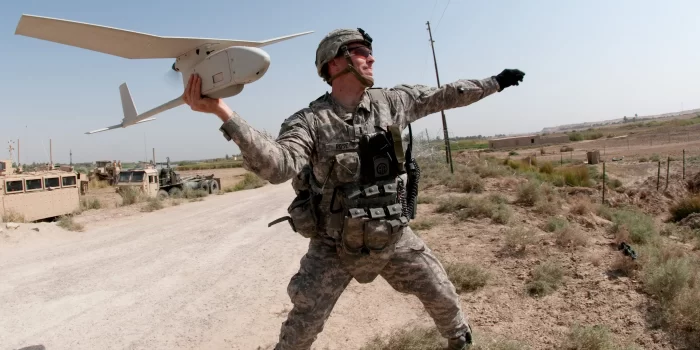The future of warfare is rapidly evolving, as the United States military unveils an ambitious plan to deploy thousands of autonomous weapons systems in the coming years. In a recent announcement, US Deputy Secretary of Defense Kathleen Hicks introduced the Replicator initiative, designed to collaborate with defense and technology companies to manufacture high volumes of cost-effective systems for all branches of the military. The primary objective is to bolster the US military’s capabilities in response to China’s escalating power.
Autonomous military systems, capable of various degrees of independent operation, have been in development for over a decade. However, the scale and scope of the Replicator program signify a pivotal shift in modern warfare—ushering in an era characterized by the widespread use of warfighting robots.
Recent conflicts, such as Russia’s war in Ukraine, have demonstrated the readiness of military robotics for real-world deployment. Loitering munitions and naval attack drones have proven effective in targeting armored vehicles, artillery, and naval fleets, highlighting the potential of these autonomous systems.

Deputy Secretary Hicks emphasized the urgency of adapting military strategies, outlining the Replicator program’s goal to deploy “attritable autonomous systems at scale of multiple thousands, in multiple domains, within the next 18 to 24 months.” This means developing robots capable of executing complex military missions without human intervention, with affordability allowing for combat losses to be replaced.
The Replicator initiative aims to deploy autonomous systems across various domains—land, sea, air, and space. The objective is to ensure the US military can address both immediate threats, such as Russia, and the longer-term challenge posed by China, which excels in terms of sheer numbers and mass.
One pressing scenario of concern is a hypothetical battle for Taiwan, where large swarms of robots could become a decisive factor in repelling a major Chinese invasion.
However, Replicator has broader ambitions beyond immediate challenges. It seeks to institutionalize mass production of robots for long-term military use, creating a deterrent against aggression and ensuring readiness for the future.

One significant concern with autonomous systems is their adherence to the laws of armed conflict. While proponents argue that careful programming can ensure compliance, skeptics highlight the unpredictability of real-world combat scenarios.
Deputy Secretary Hicks emphasized the need for a “responsible and ethical approach to AI and autonomous systems,” implying that formal human authorization may still be required for lethal actions.
The US’s push towards deploying large numbers of autonomous systems sets a precedent, with other nations like China and Australia also exploring the possibilities of military robotics. As technology becomes more accessible, autonomous military systems are no longer exclusive to major powers, potentially reshaping the dynamics of global conflict in the years to come.


